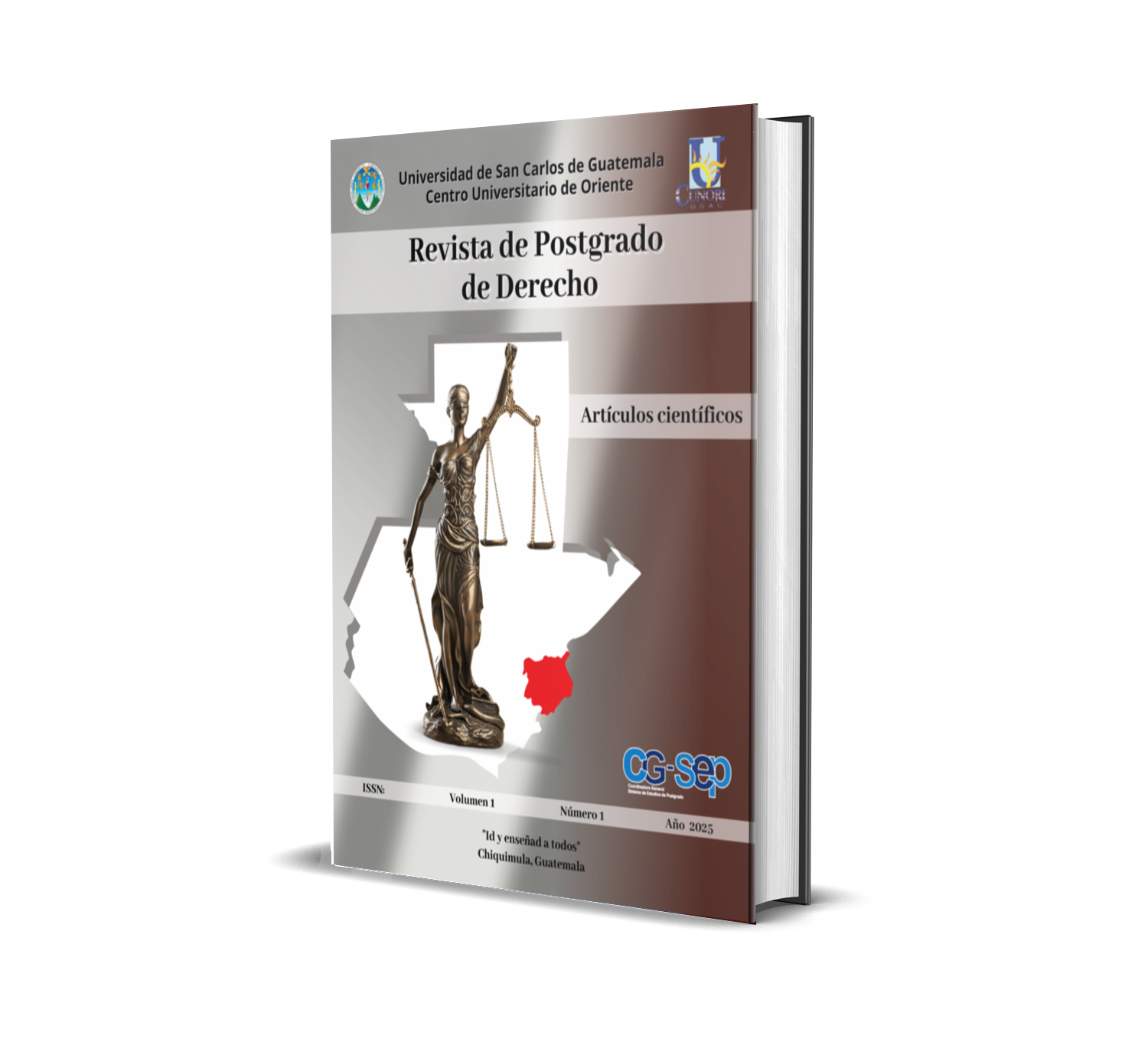La criminalidad y violencia en el departamento de Zacapa
DOI:
https://doi.org/10.36314/postgradosderecho.v1i1.1Palabras clave:
criminalidad, violencia, región, economía, narcotráfico, pobrezaResumen
PROBLEMA: el problema de análisis surge en la rápida evolución de las nuevas organizaciones criminales y la constante violencia entre las mismas, por ende, del constante cambio de las conductas delictivas vinculadas al tráfico de estupefacientes y pelea de rutas. OBJETIVO: establecer cuáles son los principales índices delictivos vinculados a las alzas de criminalidad en el departamento de Zacapa. MÉTODO: la metodología aplicada gracias al análisis potencial del término general sobre los aumentos de criminalidad gracias a la falta de acción económica y educacional. RESULTADOS: las alzas de criminalidad son el reflejo de falta de acción por parte de las instituciones encargadas de la prevención criminal. CONCLUSIÓN: el departamento de Zacapa es el epicentro fronterizo en la región centroamericana, lugar donde convergen la mayoría de rutas criminales, punto importante para que las organizaciones criminales de alto nivel puedan apoderarse de las clases económicas de bajos recursos con el aprovechamiento económico en promoción de una vida de dinero bajo el riesgo de trabajo en sistemas ilícitos.
Citas
Banco Mundial. (2019). Guatemala: Diagnóstico de la violencia y seguridad ciudadana. (s.e.). https://www.scielo.org.mx/scielo.php?script=sci_arttext&pid=S1665-80272018000100150
Diario de Centro América. (2021). Estrategias del Gobierno para Combatir la Criminalidad en Zacapa. https://dca.gob.gt/noticias-guatemala-diario-centro-america/la-batalla-contra-la-violencia-y-el-crimen-organizado-es-fortalecida/
CEGSS. (2020). Centro de Estudios para la Gobernabilidad y la Seguridad. Informe Anual sobre la Situación de la Seguridad en Zacapa. Centro de información, desarrollo y estadística judicial del Organismo Judicial: www2.oj.gob.gt/estadisticaj/
Flores, R. (2021). Violencia Juvenil y Pandillas en Zacapa: Un Análisis Criminológico. Revista Criminalística, 8(3), 112- 125.
Fundación Myrna Mack. (2020). Criminalidad e inseguridad en Guatemala, Evaluando la Capacidad Estatal de Reducir la Violencia y Combatir la Criminalidad Organizada, WOLA, Incidencia a favor de los derechos humanos en las Américas. Serie I. https://www.wola.org/wp-content/uploads/2020/08/Crimen-y-Violencia-GT-ESP-8.7.pdf
Garrido, L. (2022). Corrupción y Delincuencia en Zacapa: Obstáculos para la Seguridad. Revista de Ciencias Sociales, 25(1).
INACIF. (2020). Instituto Nacional de Ciencias Forenses de Guatemala. Estadísticas de Homicidios en Zacapa.
López, M. (2022). Impacto del Narcotráfico en la Seguridad de Zacapa. Revista de Seguridad Nacional, 12(1), 78- 91.
Méndez, A. (2020). Violencia en Zacapa: Un Reto para la Seguridad Ciudadana. Revista de Estudios Guatemaltecos, 15(2), 45-57.
Municipalidad de Zacapa. (2019-2022). Política Pública Municipal para la Prevención de la Violencia y el Delito, departamento de Zacapa.
PNUD. (2022). Programa de las Naciones Unidas para el Desarrollo. Informe sobre Desarrollo Humano Guatemala.
UNODC. (2021). Informe Mundial sobre la Delincuencia Organizada Transnacional.
Publicado
Cómo citar
Número
Sección
Licencia
Derechos de autor 2025 Leonora Elizabeth Cordón Arrivillaga

Esta obra está bajo una licencia internacional Creative Commons Atribución 4.0.
Los autores/as que publiquen en esta revista aceptan las siguientes condiciones:
- Los autores/as conservan los derechos de autor y ceden a la revista el derecho de la primera publicación, con el trabajo registrado con la licencia de atribución de Creative Commons 4.0, que permite a terceros utilizar lo publicado siempre que mencionen la autoría del trabajo y a la primera publicación en esta revista.
- Los autores/as pueden realizar otros acuerdos contractuales independientes y adicionales para la distribución no exclusiva de la versión del artículo publicado en esta revista (p. ej., incluirlo en un repositorio institucional o publicarlo en un libro) siempre que indiquen claramente que el trabajo se publicó por primera vez en esta revista.
- Se permite y recomienda a los autores/as a compartir su trabajo en línea (por ejemplo: en repositorios institucionales o páginas web personales) antes y durante el proceso de envío del manuscrito, ya que puede conducir a intercambios productivos, a una mayor y más rápida citación del trabajo publicado.





